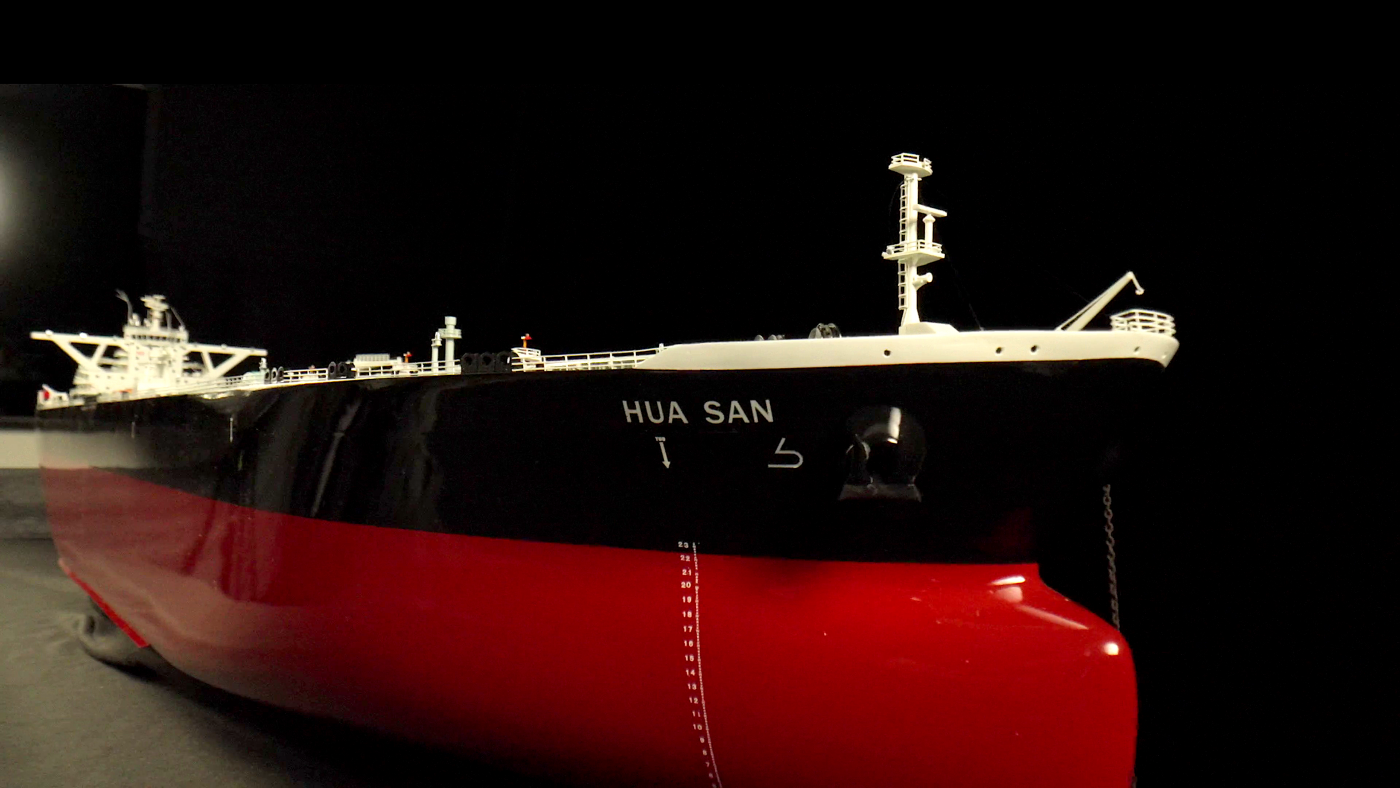Maritime Innovation In Miniature
Hua San
This is a model of Hua San, a crude oil tanker. She was built in China by the Shanghai Waigaoqiao Shipyard in 2008. Tankers like this are the largest man-made moving objects on earth. Her launch marked a new era of tanker construction.
Every day, thirty-eight million tons of crude oil sets off by sea. The safety of the sailors who transport it, the environment in which they work and the cargo itself, is assured by marine classification societies who oversee the construction of ships like Hua San.

Hua San’s launch in 2008 set new standards for safe tanker construction.
She was the first tanker built to CSR notation. CSR stands for ‘Common Structural Rules’. which were developed by the International Association of Classification Societies to create safer and more dependable ships and was adopted for all new ships contracted after April 2006.
The Common Structural Rules were adopted to remove variations in design and achieve consistency in construction quality – by establishing the minimum requirements to mitigate the risks of major hull structural failure.
They featured increased strength requirements and more robust fatigue-related construction, based on a target of a vessel life of 25 years, measured under harsh North Atlantic operational conditions.
This was an important time to introduce new rules: global economies were gripped by recession from 2006. In such challenging economic times, it was essential to cast a spotlight on the marine industry and guarantee the quality of construction.
Oil tankers are classified based on their carrying capacity in deadweight tons, which is the total weight of the ship including cargo, crew, and stores minus the weight of the ship if it were empty.
With a capacity of 318,000 dwt tons Hua San is one of the largest vessels that can be classed as ‘VLCC’ – which stands for Very Large Crude Carrier.
First developed in the 1960s, VLCCs have a capacity that ranges from 200,000 deadweight tons to 320,000 and can carry two million barrels of oil.
Hua San is not only the first VLCC built to Common Structural Rules, but also the biggest vessel by deadweight ever built in China.
The basic design was created by Korea Marine Consultants with the detail and production design completed at Shanghai Waigaoqiao Shipyard. The innovative design was supported throughout by experts at Lloyds Register Asia.
Vessels of this size are too large to pass through the Suez Canal, the Panama Canal or the Straits of Malacca.
Too large to enter port fully loaded, their cargo is usually loaded and unloaded at offshore platforms or passed to fleets of smaller tankers.
On deck we can see the cargo manifold, the terminal point of the tanker deck piping. It consists of a number of pipes that branch off into two or more open ends for cargo loading or discharge. As the oil enters the tanks, vapour inside the tanks must be expelled. To maintain trim as the oil is loaded, water ballast is also expelled.
The process of loading and unloading is dangerous and governed by, rules, regulations and laws.
Vessels this large pose a number of dangers because of their inertia, which makes them very difficult to steer. A loaded supertanker could take as much as 4 to 8 kilometres and 15 minutes to come to a full stop, and has a turning diameter of 2 kilometres.
Her bulbous bow reduces her drag and wave-making resistance, making her operation more efficient. Because of this design, her journeys take less time and her fuel consumption is reduced. This particular bow shape is known as Moor Deep, one of several different types of bow design.
Oil tankers also pose a significant risk because of their cargo and the potential for environmental damage should there be a significant spill.
The construction of oil tankers has been heavily regulated since a number of high-profile oil spills, most notably the Exxon Valdez disaster of 1989 which resulted in 10.8 million gallons of oil affecting 1300 miles of coastline. Over 400,000 seabirds 1,000 sea otters, and an immense numbers of fish were killed.
Modern vessels like Hua San carry eight times as much oil as the Exxon Valdez and there are more than 800 ships of this size operating worldwide today. The challenge of guaranteeing their safety is, therefore, enormous and is met today by Marine Classification Societies such as Lloyds Register.

